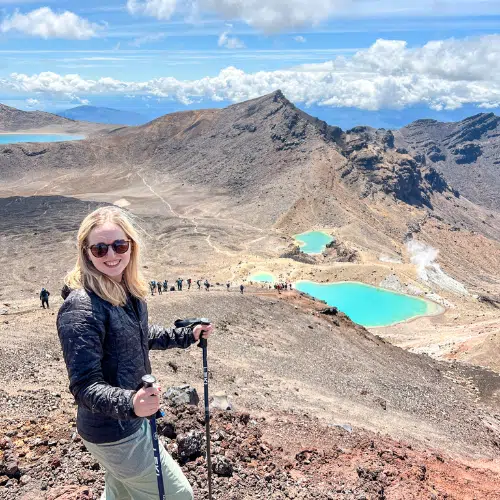Tongariro Alpine Crossing: How To Conquer One of the Best Day Hikes
Tongariro Alpine Crossing in the North Island of New Zealand consistently ranks as one of the top 10-day hikes in the world. When planning my trip to New Zealand, I felt I couldn’t let the opportunity pass me by, so even though I’ve never considered myself a “hiker,” I added it to the itinerary. The crossing was definitely challenging, but it was doable even for a novice. After completing it, I now understand why it ranks so highly – it’s an incredible hike through some of fascinating scenery!
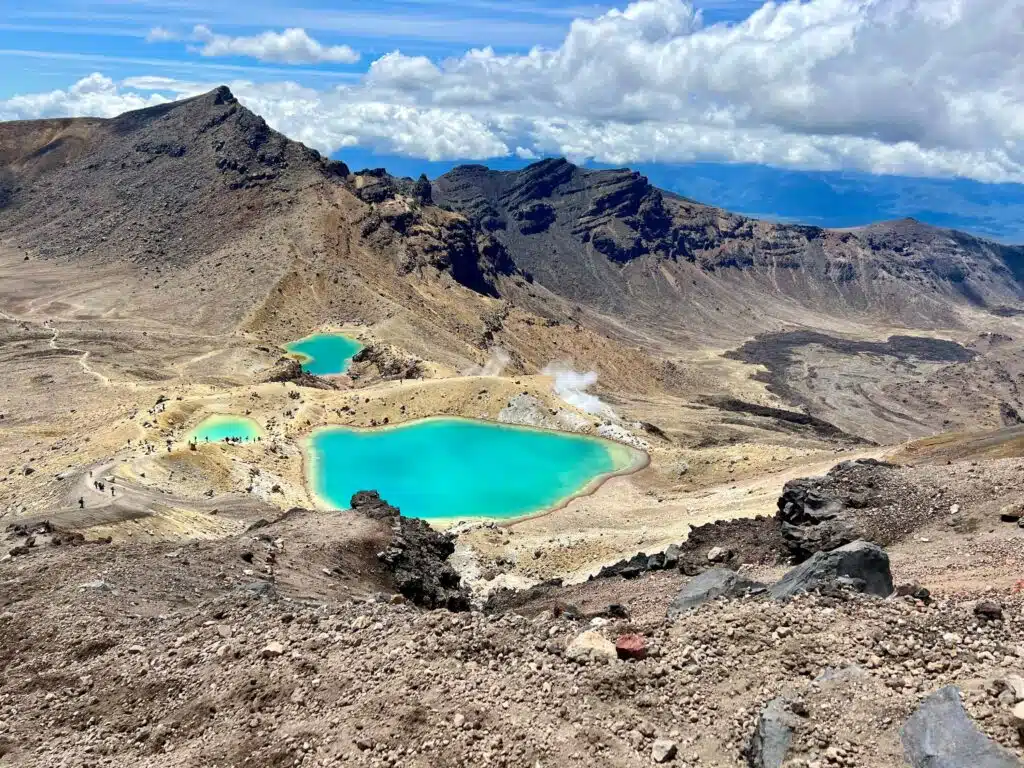
If you’re wanting to see the spectacular alpine lakes and tackle Tongariro Alpine Crossing for yourself, here’s everything you need to know.
This post may contain affiliate links, which means I’ll receive a commission if you purchase through my link, at no extra cost to you.
Tongariro Alpine Crossing Stats
Tongariro Alpine Crossing is located in National Park in the North Island of New Zealand. It takes you right through an active volcano zone. Here’s the key stats of the hike:
- 19.4km/12 miles – note that this hike is not an out-and-back hike so you start and end in different locations
- 3000’ elevation gain (according to my Apple Watch)
- Approximately 6-8 hours start to finish
- open year round but November-May is the best time to hike it (in the winter you’ll need extra equipment and may want to go with a guide)
- There are toilets located throughout the hike, roughly every 1-2 hours
Our hike ended up being 14 miles total due to detour to a couple of waterfalls and the walk back to the car from the hike’s official end point. It took us almost exactly 7 hours from start to finish.
GETTING to Tongariro
To get to Tongariro, we flew into Rotorua, rented a car, and drove down to National Park about 2 hours south. We stayed at The Park Hotel Ruapehu, a 3-star hotel which was perfectly adequate and a decent price

For the hike itself, we pre-booked parking at the Ketetahi Car Park, which is near the end of the crossing. Parking included a shuttle ride to the start of the hike. We paid $60 NZD/person and booked parking for both days we had chances to hike. After completing the hike on day 1, they allowed us to cancel the next day for free. If weather cancels your hike, they’ll also provide a refund.
[RELATED: What to do in Rotorua, New Zealand]
CHECK THE WEATHER
Tongariro is notorious for bad weather, so it’s recommended that you build in 2-3 days to your itinerary to have one good chance at the hike. We lucked out with amazing weather and were able to hike it on our first attempt, but the next day (our backup day) the crossing was closed due to inclement weather.
The Metservice.com weather report is a great site to consult for the forecast. Note that it’s most accurate within about 48 hours.
WHAT TO BRING
We visited New Zealand as part of a longer 2-week trip, so we were really strategic on what we packed for Tongariro so we could fit everything in a carry on. The most precious thing we packed was our hiking boots, which are broken in and comfortable.
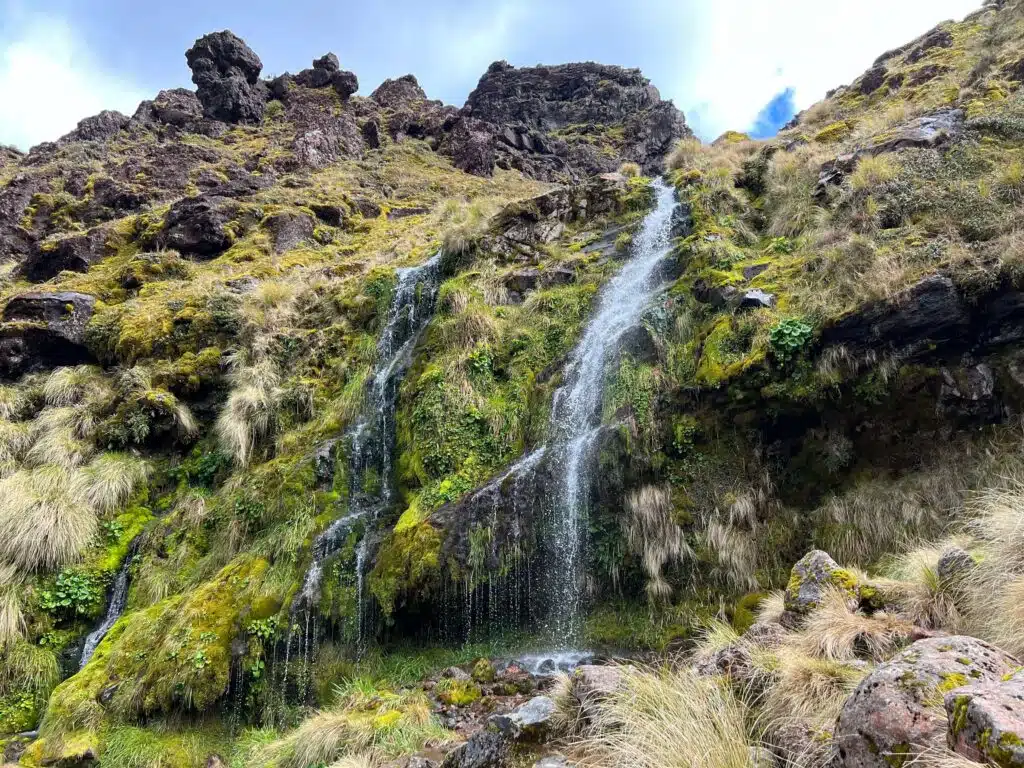
We also rented gear from The Alpine Centre, specifically hiking poles, rain pants, and rain coats. They delivered our gear directly to our hotel (for an additional fee) and when we were done, we just returned them to the hotel front desk. We had the option to rent boots from them too, but without being able to try them on due to our schedule, we didn’t want to risk them not fitting on such a long hike.
Here’s what you should pack for a successful hike:
- hiking backpack
- water (recommended at least 2 liters per person)
- snacks (enough to constitute lunch + additional snack breaks)
- layers (weather can change on a dime and the temperature drops as you ascend)
- sun protection (hat, sunscreen, sunglasses)
- hiking poles (optional but I think they helped a lot)
- good hiking boots
- toilet paper (there’s none in most bathrooms)
- rain gear
- micro spikes (in the winter)
While you’ll want to make sure you have all the necessary equipment, you have to balance that with keeping your pack as light as possible to make for a more comfortable hike. We ended up leaving the rain pants in the hotel due to the positive weather forecast and never used the rain coats either.
It’s also important to pack out whatever you bring in. I didn’t notice any trash on Tongariro Alpine Crossing, so do your part to keep it that way.
DON’T LET THE WARNINGS SCARE YOU OFF
There are multiple warning signs throughout the hike. One of the first ones is in the bathroom at the entrance that tells you that on average, 2 people per day have to be evacuated. I read that sign and made it my goal to just NOT be one of those people.
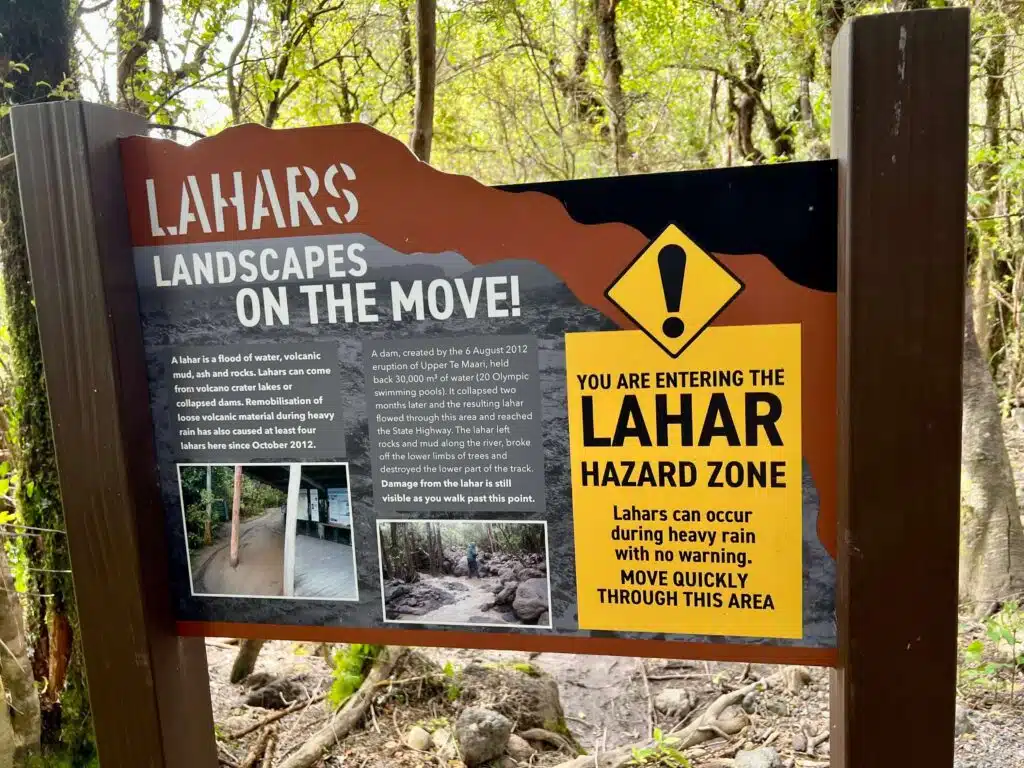
The other major warning signs you’ll see are reminding you that you’re in an active volcano zone and eruptions can happen at any time. I have a healthy fear of natural disasters, so just being near an active volcano triggered my anxiety. However, I think you have to weigh the risks and rewards. Understand that the chances of an eruption happening while you’re there is actually quite small.
100,000 people hike Tongariro Alpine Crossing each year, so there are plenty of other people around (without being overly crowded). Be honest with yourself about your physical fitness levels, but don’t let the warnings scare you away from this incredible hike.
TACKLING TONGARIRO Alpine Crossing
After the shuttle dropped us off at the start of the hike, I made sure to use the restroom (the only one with toilet paper provided). Then we did some quick stretches and officially started off at around 8AM.
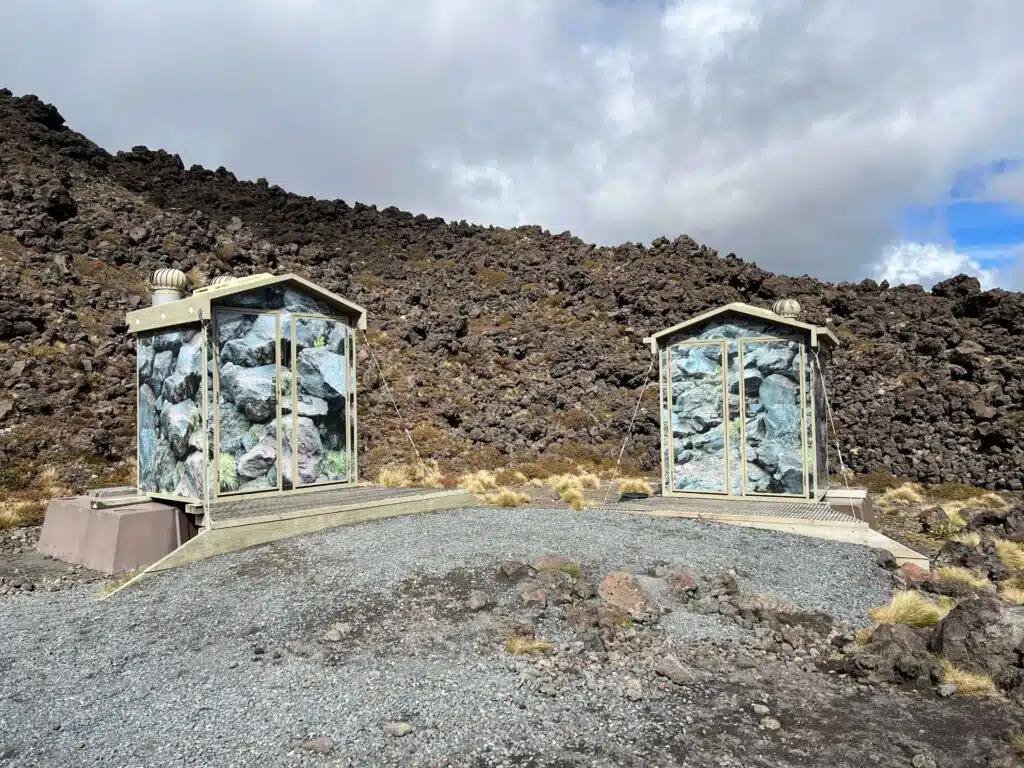
The first part of the hike is relatively flat, which definitely helped boost my confidence that I could tackle the giant challenge that lay before me. The landscape transforms over and over again throughout this hike and very quickly I felt like I had been transported to another world. It actually reminded me a lot of the volcanic areas of Iceland.
The temperature changed several times throughout our hike. I started in a long sleeve shirt and jacket and quickly went down to a t-shirt. Once we started ascending in elevation, I had to put a jacket back on as it got cold and windy.
We made sure to take plenty of snack breaks to keep our energy levels high and spread out our water to last the entire hike.
The most difficult part of the hike was not the uphill part towards the summit, but the descent immediately after. Right after the summit is a section where the ground is nothing more than volcanic ash and loose rocks. I slipped once and probably would have taken a more severe fall without the hiking poles. Thankfully it was only a short portion of the hike.

The most stunning part of the hike was the alpine lakes, which come into view at the summit. We made sure to stop by the furthest lake for a snack break to give us more time to soak it in.
Since the summit is before the halfway point of the hike, there’s a significant amount of downhill at the end of the hike. My body held out surprisingly well over such a long hike, but the balls of my feet started to develop blisters from sliding forward over and over going downhill (my legs were very sore the next day!).
The last couple of miles seemed to drag on as I was anticipating the end. It was worth it because reaching the finish sign was such a powerful feeling.
FINAL THOUGHTS
On our hike, we saw all sorts of people taking on the hike, ranging from teenagers to people well into their 60s. My longest hike prior to this couldn’t have been more than 5 miles, so you don’t need to train specifically for this. Being prepared mentally and logistically for the hike is most important. Another great resource to look at is tongarirocrossing.com.
Tongariro Alpine Crossing definitely changed my attitude towards hiking. Since then, I’ve really become much more of a “hiker,” so it’s been a little bit of a gateway to the hiker life. If you’re travels take you to the North Island of New Zealand, it’s worth carving out the time for this iconic trek.
You may also like:

